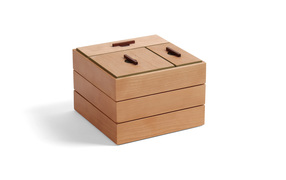 Box 52. Done. And that's all I have to say about that. Kidding. I always have plenty to say. This is another stacking box, like box 49, but I changed the shape from rectangle to square, taking box 48 as my starting point (I really like box 48). I think box 49 is too tall, so this time I made the sides 1 1/4 in. tall instead of 1 1/2 in. I know it's impossible to tell from these photos, but the lower height is an improvement. I also like the square format for the boxes. (I'm actually excited about designing more square boxes in the future. I can't believe I never tried a square box until No. 48.) The biggest benefit of the square is that I had more latitude in dividing the boxes into compartments. For the top box, I used the same arrangement as I did for box 49. For the middle box, I added a compartment. For the bottom box, I added another compartment, but not another lid. A square compartment in the middle of a box with others wrapping around it: I've had this arrangement in mind for years. I finally said fuck it and gave it a try. It wasn't as hard to do as I feared. I did not use a lid for it because I wanted a pop of color in the middle and I thought the fabric would be cooler than a painted lid. Here's something I don't like: Dumb figure holes on the two lower boxes. They suck. As I was working on this box and running through all the different ways I could make a pull for them, I was getting bummed out because I thought that I just wasn't able to design a good pull for them. The problem is that the bottom of the box above sits on the lid of the box below, so the pulls on the box bellow must be flush with the lid. That's a tough constraint to work with. However, I realized that the problem wasn't really a design problem. It's an engineering problem. I needed to change how the upper box sat on the lower box. I've figured that out now, and the next time I build a box like this (soon, I think), I'll be able to have pulls that are at least a bit proud of the lid. Then, I'll be able to design a lovely pull for the lower two boxes. So, some progress was made. I think that's all I have to say, so let's here are the customary random thoughts.
17 Comments
 I really wish this was box 52, because it brings together so much of what I've been doing for the past year that it's the perfect culmination for the 52 boxes project. This is certainly the best box I've made so far. (Actually, box 52 is already done, so I think it's the best of all the boxes, too.) Hell, it's almost certainly the best piece I've ever made. But it's box 51, so let's skip the overwrought nonsense and get doing what needs to get done. The base is a good place to begin. The idea for a base like this one came to me one day while Mike Pekovich and I were driving back from lunch (sushi, I think). If I remember correctly, we were talking about kumiko and all the things you could do with it. Out of nowhere an image came into my mind, and I said, "I could make a box with a tall base and have kumiko wrap around it." I'm not sure what I had in mind then, but I was confident that it would look cool. OK, so what was I thinking when I got around to developing the idea into an actual box? Well, the first thing I tackled was how tall the base needed to be in order to get a nice looking kumiko pattern into it, and how that would affect the size of the case on top of it. I sketched out rectangles stacked on top of one another and experimented with different heights for them. A base that was slightly shorter than the "box" on top of it but as taller or taller than the uppermost "box" looked right to my eye. (How's that for some solid design advice? Well, actually, it's pretty damn good. Sketch, mother fucker, sketch.) What you end up with is a base that is tall enough for some nice kumiko to fit into it, but not so tall as to dominate the piece as a whole. There's a harmony between the three levels even though the base is visually striking. That's what I'm always after: Something that has a lot of graphic punch but that isn't unbalanced. So, after I figured out that business, I sketched out ideas for the two rows of drawers. I wanted a space on the right hand side for a tea pot or some such thing, so I made the top row just a single drawer. The bottom row, I knew from previous experience with thin parts, couldn't be a single drawer. Thin parts like these tend to sag when they're longer than about 10 in., so I split the bottom row into two drawers. The wider one is 10 in. and the smaller one is about 7 in. wide. This told me that the top drawer should end in line with the wider bottom drawer. (Sometimes I think that I should explain how I knew this. I suppose I could by saying that it just looks better than if the top drawer were not as wide or wider. But this explanation doesn't cut the mustard with the philosopher in me. After all, why does it look better? Then we must get into a discussion of beauty, the roll of proportion, symmetry and asymmetry in beauty and all manner of abstract nonsense. Fascinating for sure, but definitely not practical. But then again, I have a gut feeling that it's just instinct.) Oh, I suppose I could explain that the width of the drawers are a result of determining how much space I would need on the right side to put a small tea pot or some other little piece of pottery. Based on some pieces that I own, I figured 7 in. would suffice. Some sketches told me that 10 in. on the other side would look nice. From there is was a matter of determining how tall the bottom drawers needed to be so that they could hold loose tea (left side) and tea packets (right side). The top drawer is for pennies, acorns, and tales of adventure (hat tip, Saint Orange.) OK, so what about the kumiko pattern? I wanted something geometric but not so crowded that it would obscure the fabric behind it. That meant a lot of negative space. I wanted two horizontal kumiko pieces between the frame and spaced them asymmetrically (more space between them than at the top and bottom) to let the fabric show through more prominently. The vertical pieces are done in pairs, because, well, I knew that it would look better than to do them individually. (Of course, there was some sketching involved, too.) The vertical pattern for the front/back had to be different that the pattern for the sides because the front/back aren't a multiple (in length) of the sides. So, I started them the same on the ends (a pair of vertical pieces 1 in. from the ends and spaced 5/8 in. apart), but the sides just have two single pieces between the pairs at the ends. I divided the space between the two pairs into thirds because there are three pairs of verticals between the two end pairs on the front and back. How did I figure all of this out? Magic 8 ball and rum. Or was it rum, then magic 8 ball? And that's magic 8 ball, not magic 8 ball. There is so much else I could say about how I designed this box, but I need more time to dissect and then organize my thoughts. I will say that all of the cherry for this one came from a single 12/4 board. I resewed it to create 3/8 in. thick boards from the edge grain. I then glued up three of these new boards to create the panels for the sides. These boards ending up being mostly quartersawn and heavily figured. Hell, the entire 12/4 board was heavily figured, even on the flat sawn faces. I hate figure. It's a pain to machine and plane, and can be distracting. And I think folks lean on figure as a crutch to make otherwise shitty design somewhat attractive. It works OK here, though, because the design is good. (When it comes to ego, the Egyptian pharaohs had nothing on me. I'm better looking than Clooney, too.) Well, I'm beginning to wander, so here are some random thoughts.
 This one feels like a big deal. It's box 50, after all, but I also think it's important because it's a refinement of a box that I've been making for several years: my old friend, the two compartment box (right). It has smaller overall dimensions (1 1/2 in. by 3 in. by 6 in. versus 2 in. by 5 in. by 8 in.), has one compartment instead of two, uses a more stylish pull, and has thinner sides and top. These differences make the box simpler and more delicate, but what makes it more elegant is the inward sloping sides and milk painted edges on the top. These are subtle things, certainly, but they make a big difference. However, I'm kicking myself a bit because had I used a slightly different pull, a slimmed down version of the one I used on box 46, this would be a perfect little box. I guess I'll have to make it again in the near future, just not before I finish the 52 box project. That's quickly coming to a close. And I already have the last two boxes designed (in fact, box 51 is just about done). The inspiration for this box came from the second box I ever made (many, many years ago). We still have that box. It sits on my wife's dresser. It's at least 1 in. taller, and is closer to square in width and length. It also has sloping sides, but I made them by starting out with thick sides and planing the slope into them after assembly. This box has 3/16 in. thick sides. There are compound miters at the corner that result in the inward slope. As I did for boxes 13, 14, and 15, I used a "wedge" to cut the compound miters, the rabbets, and the top and bottom edges. I like the technique because the wedge guarantees that all of the angles will be correct. As a result of the more refined construction, this box is more elegant than the original. I'd like to say that a lot of careful thought went into the design of this box, but that wouldn't be true. I looked at the older box, asked how I would make it now, and the answer came to me quickly. Make is shorter, make it a rectangle, and use compound miters at the corner. I also used the bottom to create a shadow line at the bottom. And the pull is similar to others that I've used. What I did, in other words, was take design details that I've been using this past year and put them together in a new way. In a way, there's nothing new hear, but in truth its a very new box. And it's one of favorites. I love its delicacy, elegance, and the beautiful fabric inside. I don't think I have anything else to say about this one, but you're more than welcome to ask questions if you have them. Here are a few random thoughts.
 I made this box and the last box to experiment with a few ideas before bringing them together in a third box, which will be one of the last two I make for the 52 box project. With box 48 I was working on how to join two thin dividers. Here, I’m testing a theory on how to stack boxes. Perhaps you can decipher where I’m heading, but I won’t say anymore now. Let’s get to the box at hand. Unless your vision is as poor as my friend from the North, Bubbles, you will have noticed by now that this box is actually three boxes that stack one on top of the other. The idea for it came from a conversation I had with Mike Pekovich some time last year. He was telling me about a box (for lack of a better term) that he had seen at a museum. It was carried by a samurai. There were a few boxes that stacked on top of one another and were held together by leather (or fabric) straps. It hung from a belt and was used to carry coins and other stuff. I suppose it was something like a stacking bento box. It sounded very cool and on the spot I decided to make a set of stacking boxes. I just had no idea how to do it. A short time later I realized that many of the boxes I had been making in the 52 box project lent them selves to stacking because I was using a rabbet in the top and bottom of the sides to hold the lid and bottom. If I made two boxes with the dimensions and cut identically sized rabbets on the top and bottom on both boxes, the lid for one box would fit into the rabbet on the bottom of the other box. And the lid for the lower box would capture the box on top of it, holding the box in place. This is how these three boxes stack. Of course, me being me, there had to be a shadow line between the boxes. So, the top two boxes have very thin bottoms, but not so thin that the box sits on the box sides beneath it. The lid of the lower box holds the upper box about 1/16 in. above. And there’s your shadow line. I like the shadow line here because it reveals that there are three boxes stacked rather than a single absurdly tall and narrow box. But that visual break between the boxes does something else, too. There is no grain match as you move up from one box to the next. I didn’t cut the sides from a wide board, in other words. This lack of match would have been noticeable had there been no space between the boxes, but it’s really not with the shadow line there. That’s a good thing. When planning this box I knew that I wanted each box to have a different number of compartments, but before I gave any extended thought to this, I kicked around different proportions for the boxes themselves. I finally settled on a rectangle that's twice as long as it it wide. To keep the stacked boxes a reasonable height, I made the sides 1 1/2 in. tall. After deciding on a fairly narrow rectangle, I knew that a divider along the boxes length wouldn't be practical, because it would create two long and very narrow compartments. So, all of the dividers run across the width. After that it was a fairly quick trip to a box with one compartment, one with two compartments and one with three. The compartments for the top box are not all the same size. The one in the middle is narrower. Why? Because cutting dadoes for the dividers in exactly the right location to end up with three equally sized compartments would be crazy hard. But cutting dadoes to make the two outside compartments the same size with a smaller (or larger) middle compartment is a snap. So, that's what I did. (I know this leaves a big question—why is that true and how the hell did you do it?—hanging unanswered, but I beg your pardon, I never promised you a rose garden. There was also the decision about which box would go on the bottom, which in the middle and which on top. There is an argument for going three, two, one from the bottom up. However, a box with one compartment is a solid foundation because it's unbroken. So, it went on the bottom. The box with three compartments looks like three little boxes next to one another, so it went on top. And that's all I have to say about that. Once again, I've blathered on. Here are your randoms for the week.
 I made a two of this box. One was for the 52 boxes project and the other was for the daughter of a friend who has given me a lot of great lumber over the last few years. When he gave me some wonderful vertical grain Douglas fir recently, I decided to use it to make a box for his adorable little girl. The boards were left over from a sideboard he'd made for her room. He and I have very different styles, but the fact that the box and sideboard were made from the same boards holds the two together. I know that doesn't say much about the design, but it's a part of this box's story. In fact, the wood is the origin of the box. I normally design and then pick lumber, but this time I was starting with the lumber and needed to develop a design that played to its strengths. I also needed more vertical grain Douglas fir, because what my friend had given me was really only enough for one box. Fortunately, I once found a 3 in. thick, 6 in. wide and 12 ft. long piece of Douglas fir in the corner of a lumber yard. I bought it without a second thought. I'm glad I did, because it's got some figure to it, a lovely, warm color, and super tight grain that's a bit wavy. (I used it's end grain to veneer the drawer fronts on this cabinet.) At any rate, I was designing with vertical grain Douglas fir in mind. What I wanted was a box that emphasized the tight, straight grain. This is no trouble on the sides. Make them rectangular, with the grain running the length. The lid is a different story. I knew that I wanted the box to have at least three compartments, because the three corresponding lids would allow me to play with the fir's grain. However, a box with overall rectangular dimensions limits the shape, size and arrangement of the compartments. So, I went square. I think this is the first square box I've ever made. It's 6 in. square, to be exact. The narrow, full-width compartment is 2 in. wide, or one third of the box's overall width. The smaller of the two 4 in. long compartments is 2 in. wide. The larger one is 4 in. square. These divisions make for compartments (and lids) that are well proportioned in themselves, in relation to one another, and in relation to box's overall dimensions. At the risk of putting even myself to sleep, here's a more detailed explanation of what's going on. The basic dimension of this box is 2 in. The sides are about 2 in. tall when you take the bottom and lid into account. The box is 6 in. square. That's three times the basic dimension, so there are three compartments. The dimensions for the compartments are all multiples of 2 in. My good friend Charles Hermann helped me work all of this out. He has a beautiful mind. (Get thee to Google to decipher this reference, my friends.) Back to the grain. The division and orientation of compartments allowed me to use the grain more boldly. It runs in one direction on the left side, and 90 degrees to that on the right side. Yet, because the grain is subtle, there's no uncomfortable tension created by this redirection of the grain. Somehow it's a dissonance that creates a harmony. I can't explain why this last statement, which makes the philosopher in me suspect it as Grade A bullshit, but I'll think about it some more and see if I can come to a meat-and-potatoes explanation. I wonder if my old friends, the Pythagoreans, might have something to say about this. Well, that's a lot of talk about grain, proportions, and patterns. Let's talk about something else: the pulls. This is the second time I've used this pull on a box. What I like about them is the play between the circular mortise and the thin, rectangular pull. Combined, they create a nice visual set against the background of the tight, straight grain of the Douglas fir. The depth of the mortise allows me to use a pull that's very low but still gives enough grip (the pull extends down into the mortise). And before you ask: No, I didn't use the same technique that was recently feature in Fine Woodworking magazine. (Everyone reads Fine Woodworking, right?) I don't mortise for the pull. Rather, it's T-shape and the horizontal bar fits over the lid. OK, I've written a lot, so I'm going to stop. (Don't worry, I've addressed the major design points of this box.) Enjoy some random thoughts.
|
AuthorI love furniture design, and smart techniques. This blog is about both. Archives
August 2020
Categories |



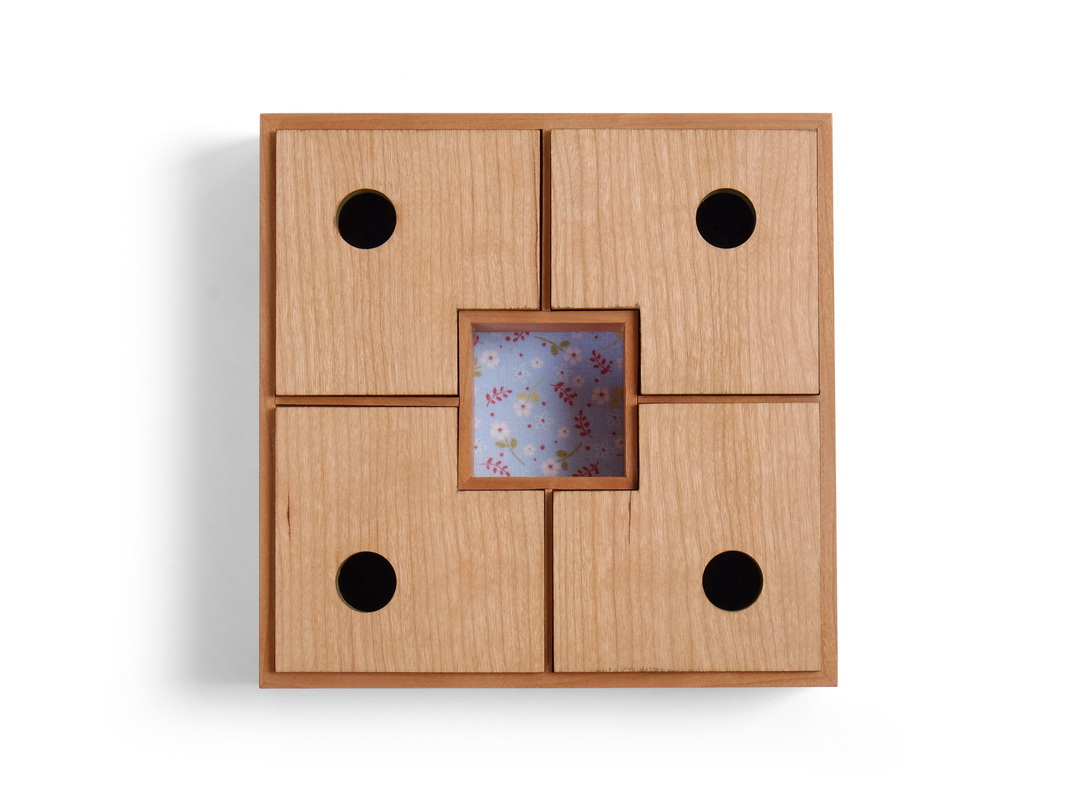




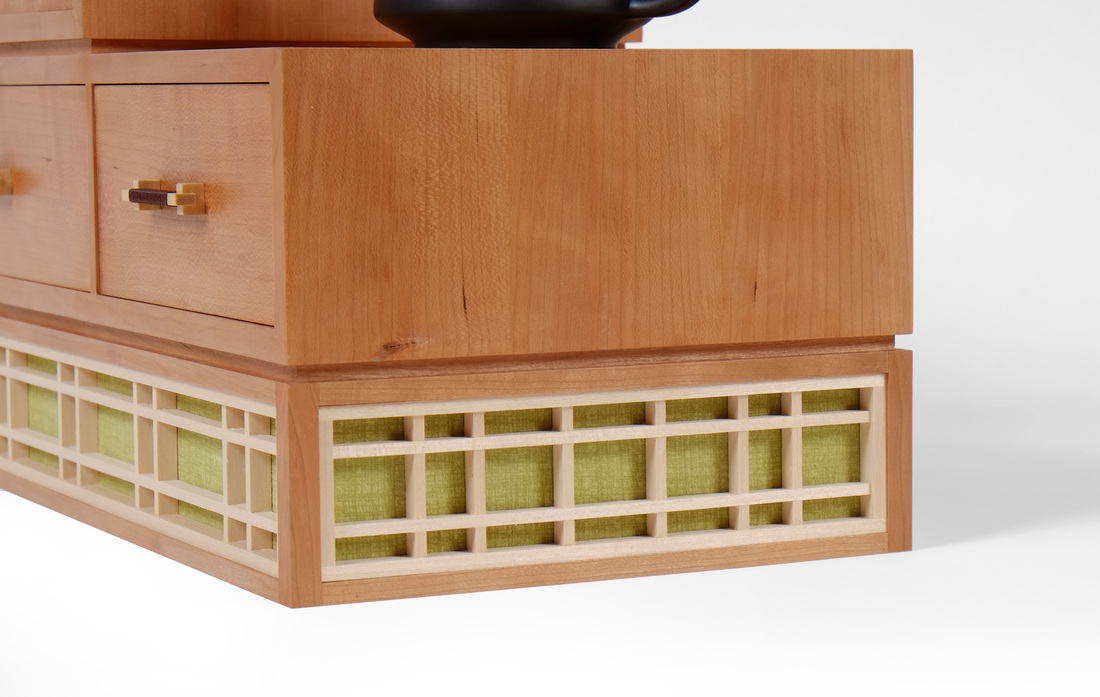



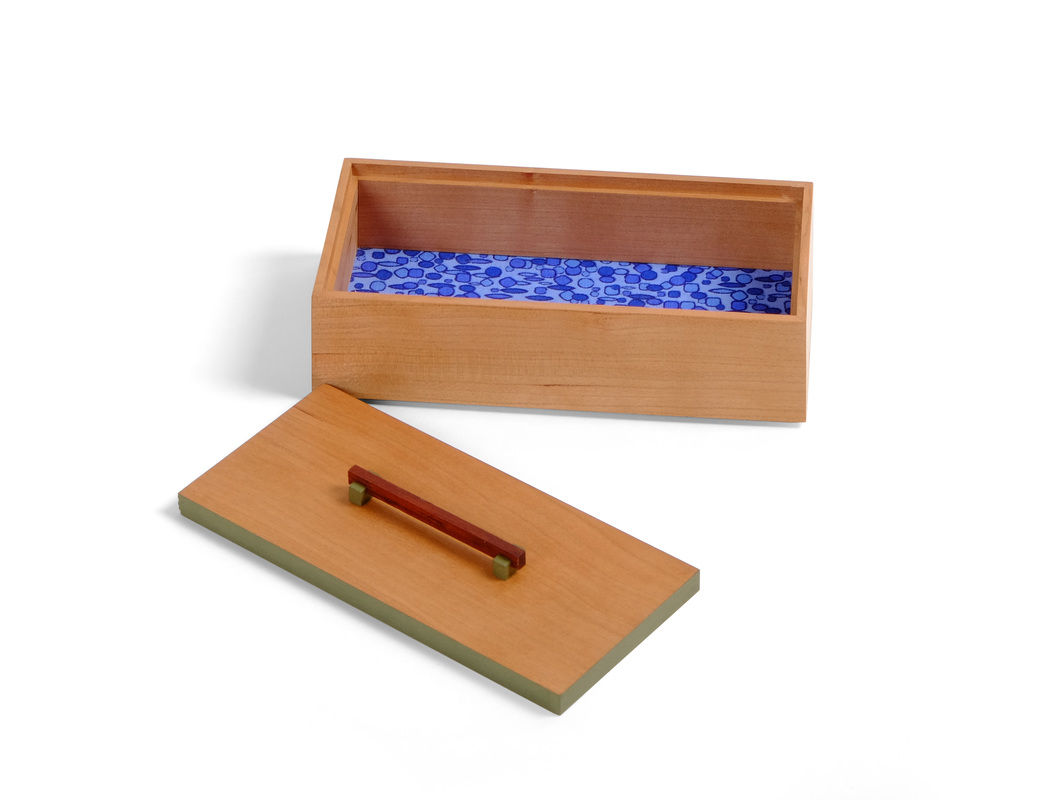
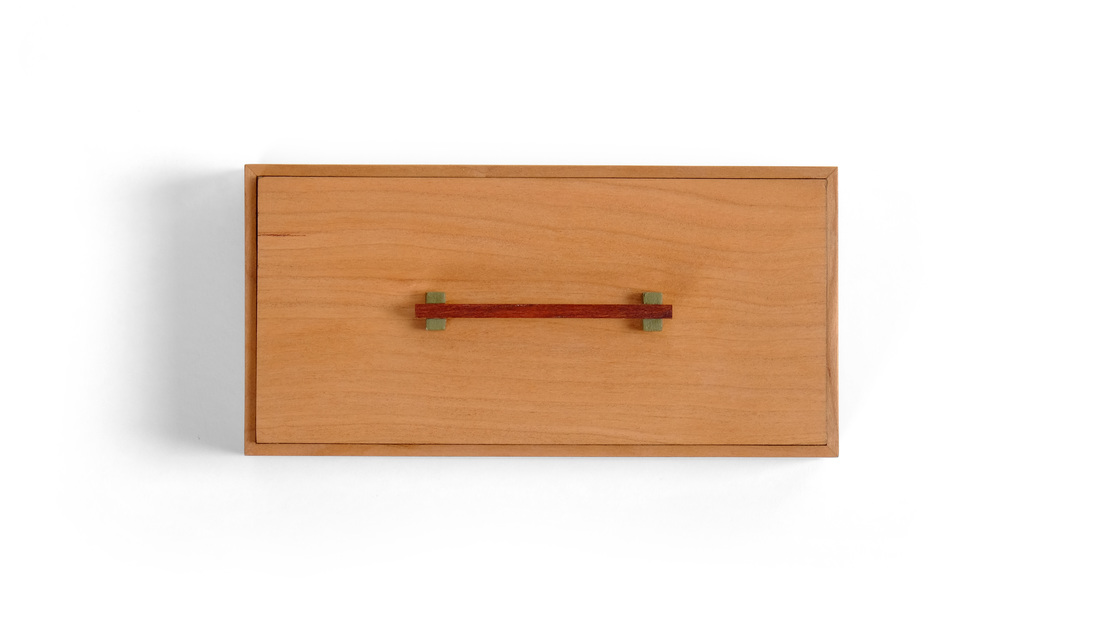



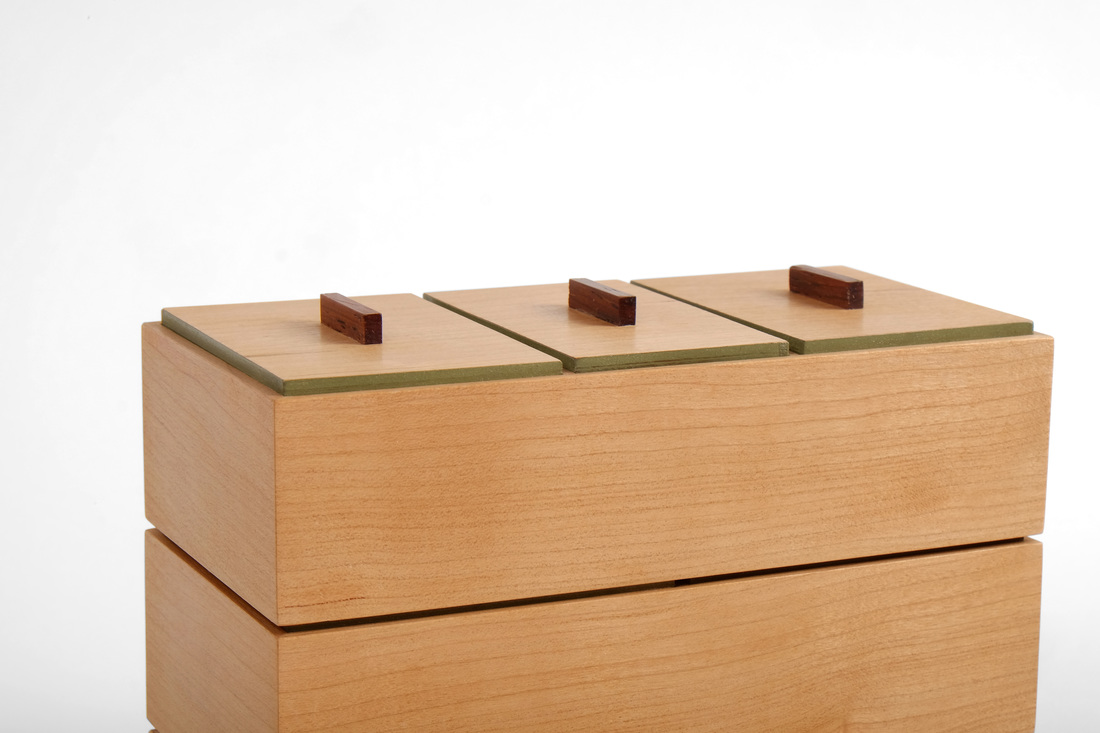
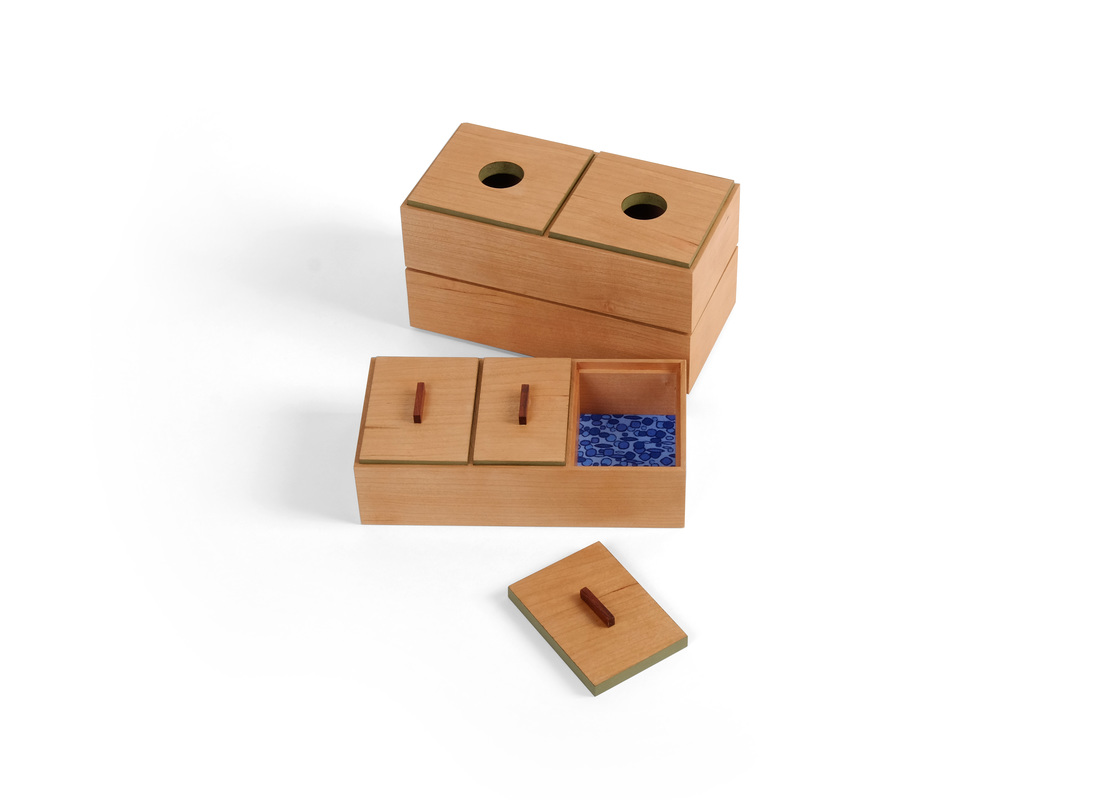







 RSS Feed
RSS Feed